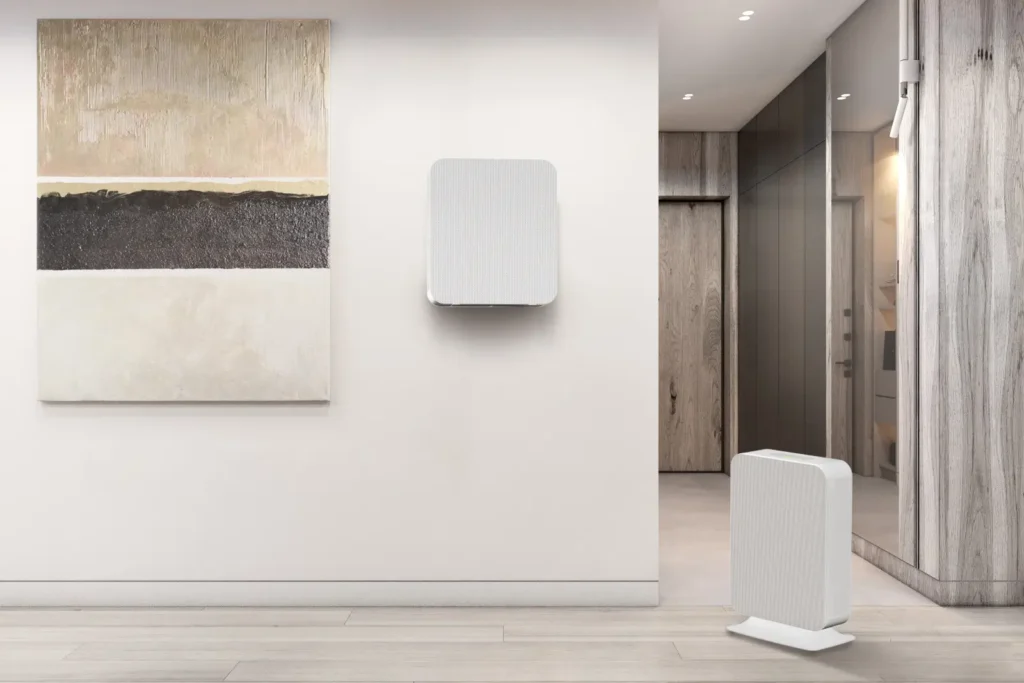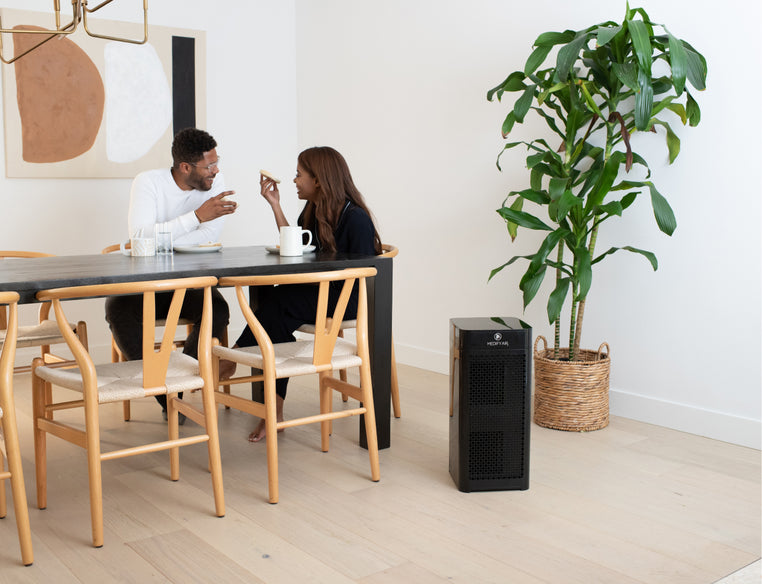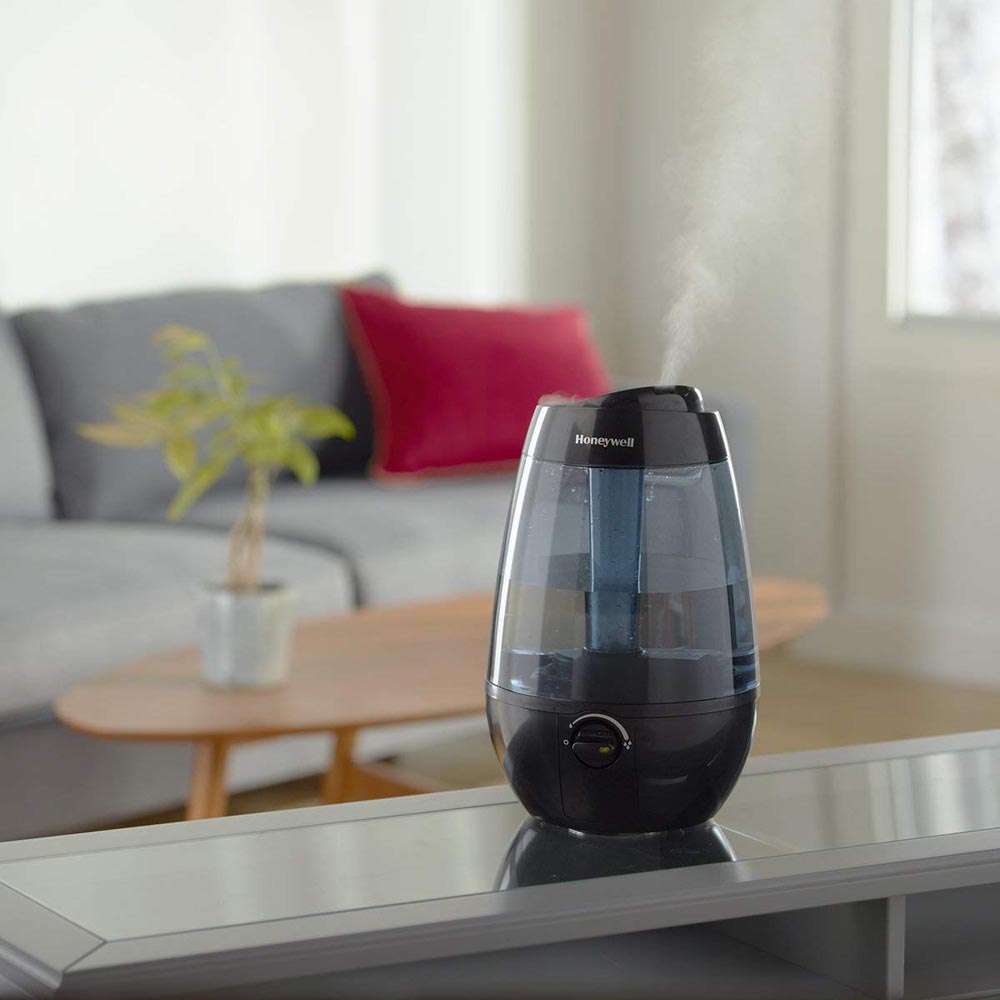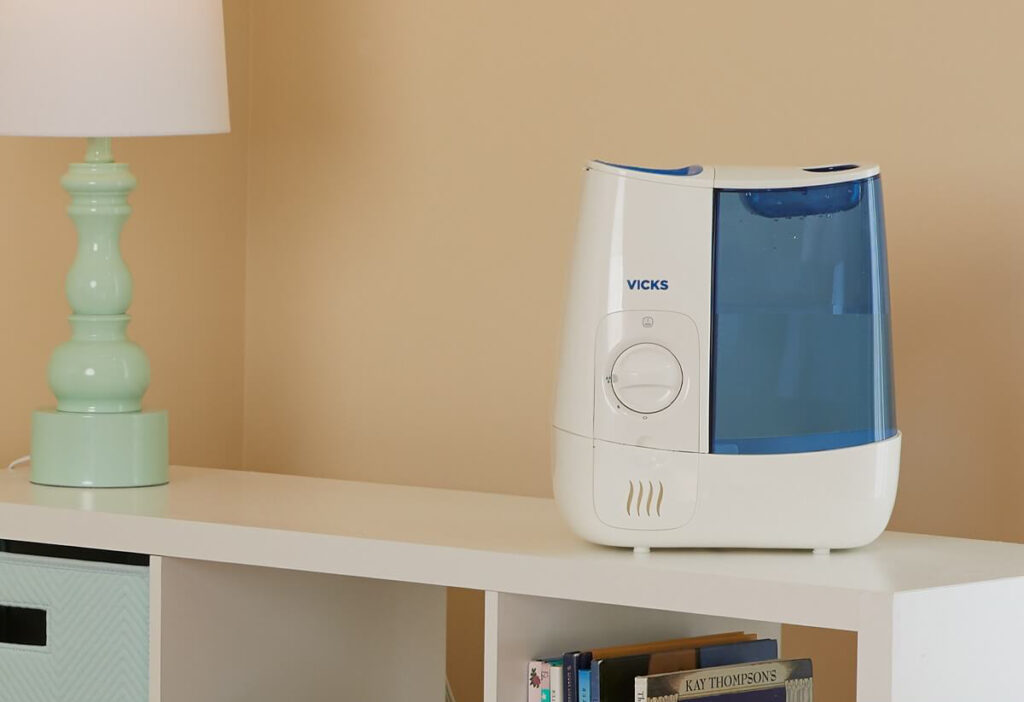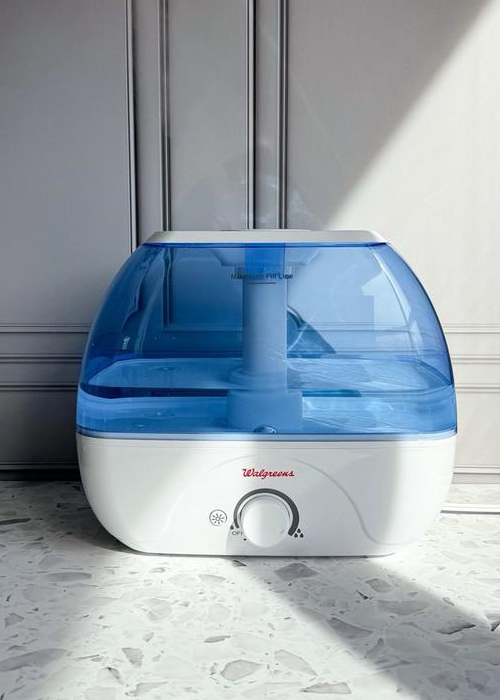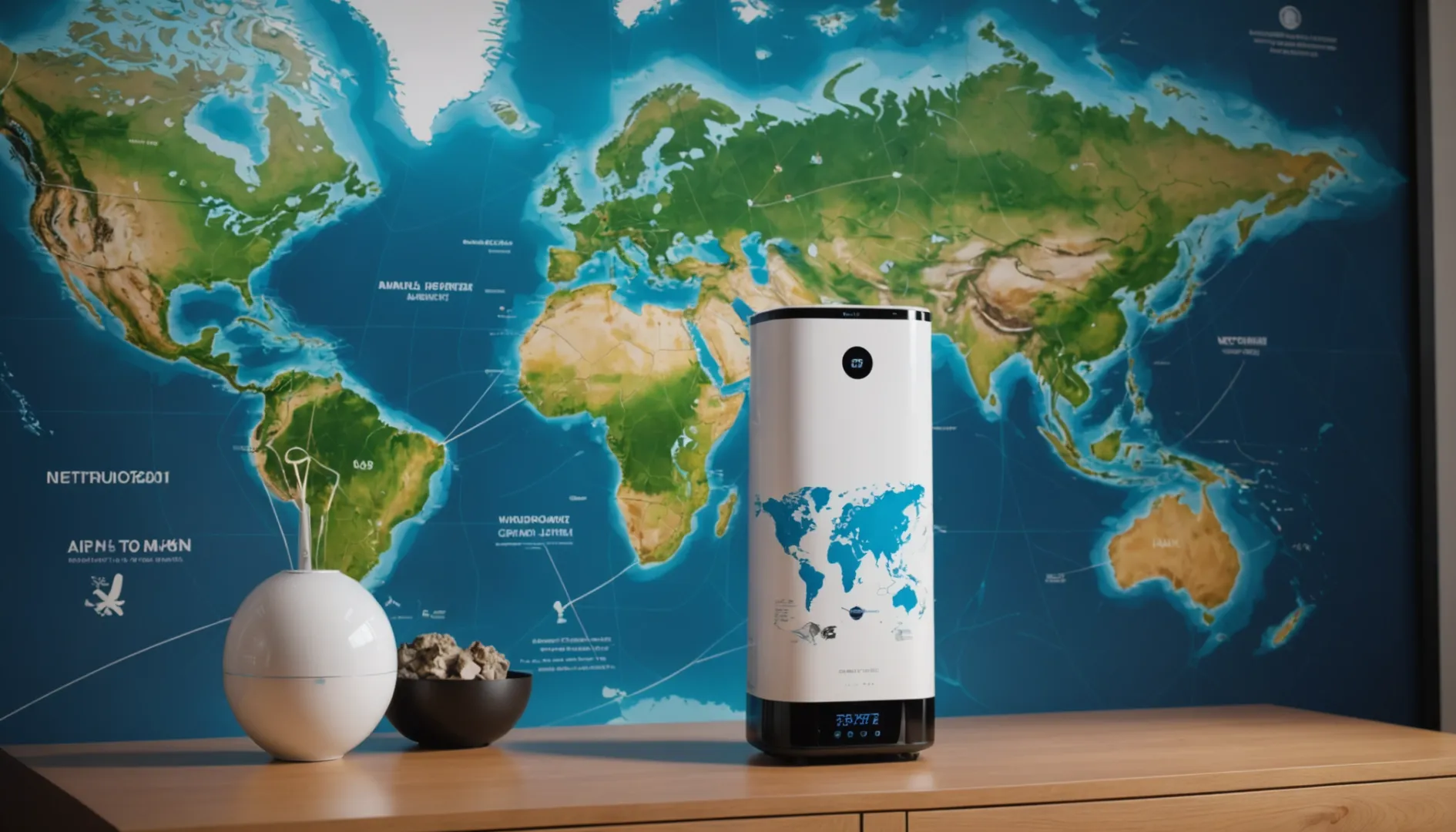
Помните, как вы впервые почувствовали потребность в свежем, чистом воздухе? Именно поэтому я начал импортировать очистители воздуха.
В настоящее время импорт воздухоочистителей из Китая в США не облагается тарифами до 30 мая 2025 года. После этого срока тарифы могут вырасти до 25% или выше, что будет зависеть от будущей торговой политики США. Импортерам рекомендуется изучить альтернативные стратегии поставок.
Хотя нынешнее освобождение от налогов дает временное облегчение, понимание возможных будущих тарифов имеет решающее значение для долгосрочного планирования. Я помню, как сидел за своим столом с калькулятором в руках и подсчитывал цифры, чтобы понять, как изменения в тарифах могут повлиять на мой бизнес. Главное - быть готовым. Узнайте, как ориентироваться в этих изменениях и оптимизировать свою стратегию импорта в условиях меняющейся динамики международной торговли. Будь то работа с поставщиками из Вьетнама или диверсификация вариантов выбора поставщиков, есть способы быть впереди.
Тарифы на воздухоочистители из Китая в США в настоящее время равны нулю.Правда
Очистители воздуха из Китая освобождены от тарифов до 30 мая 2025 года.
Импорт воздухоочистителей из Вьетнама позволяет избежать будущих тарифов США.Правда
Закупки в таких странах, как Вьетнам, могут снизить будущие тарифные риски.
Как будущие тарифы могут повлиять на стоимость очистителей воздуха?
Помните, как в последний раз тарифы всколыхнули рынок? Следующими могут стать воздухоочистители, и это может произойти даже ближе к дому, чем вы думаете.
Если в будущем тарифы на воздухоочистители вырастут, их стоимость может подскочить до 60%. Это, скорее всего, приведет к росту потребительских цен, если производители не изменят свои цепочки поставок.
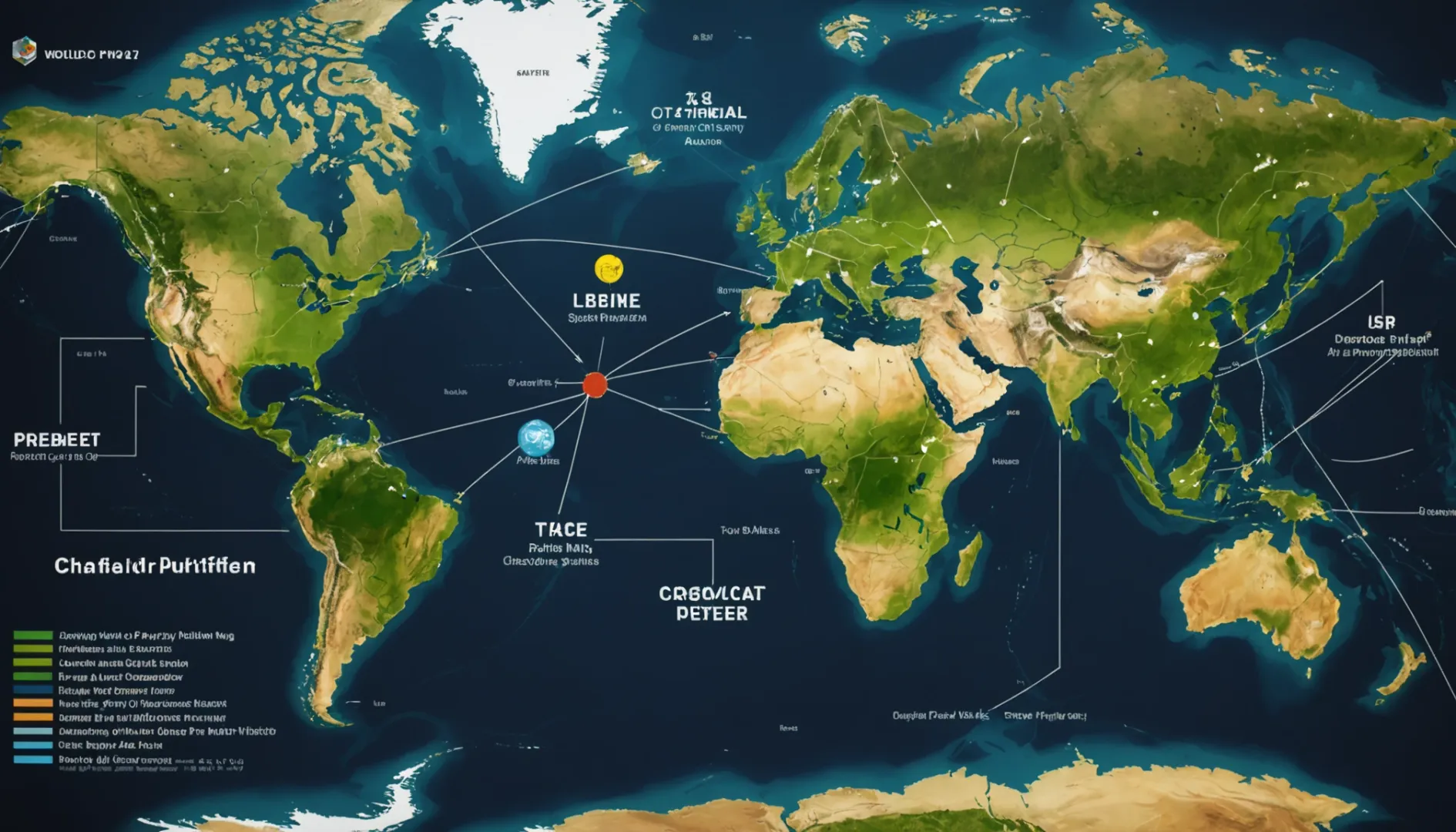
Понимание действующих тарифных льгот
Сейчас покупка очистителя воздуха кажется глотком свежего воздуха для моего кошелька - благодаря тому, что США освободили импорт из Китая от тарифов до 30 мая 2025 года. Помню, как я купил свой первый очиститель, удивляясь тому, насколько он был доступен. Но, как и все хорошее, это не может длиться вечно. Политические ветры могут изменить направление быстрее, чем я передумаю о планах на выходные.
Потенциальное повышение тарифов и его влияние
Я уже готовлюсь к шоку, если после освобождения тарифы поднимутся до 60%. Это как ожидание бури после солнечного дня - проверка реальности для таких потребителей, как я, которые любят чистый воздух, но ненавидят платить за него больше. Если это произойдет, моя мечта о переходе на новую модель, возможно, придется подождать.
Стратегии производителей по снижению затрат
Я читал, что производители рассматривают возможность переноса производства в такие места, как Вьетнам или Мексика. Это напоминает мне о том, как я однажды поменял спортзал, чтобы сэкономить деньги без ущерба для качества. Эта стратегическая изменение цепочки поставок1 Это позволит сохранить стабильность цен, и я буду только за, если это позволит не разорять банк.
Альтернативы китайскому импорту
Изучение импорта из Индии или Германии звучит интригующе, хотя я беспокоюсь об эффективности затрат и технологическом прогрессе. Покупка местных продуктов в США - еще один вариант, но он напоминает мне о том, как я пытался печь хлеб дома - возможно, но дороже и не так вкусно.
Подготовка к экономическим изменениям
В этом постоянно меняющемся ландшафте оставаться в курсе событий - это как готовиться к зимней буре: необходимо и разумно. Слежу ли я за изменениями в политике или рассматриваю гибкие варианты, я готова адаптироваться и следить за тем, чтобы мой воздух оставался таким же чистым, как и мои намерения. Проактивность - это мой план действий, который поможет справиться с любыми трудностями, возникающими на моем пути.
На воздухоочистители из Китая действуют нулевые тарифы до мая 2025 года.Правда
В настоящее время воздухоочистители освобождены от тарифов до мая 2025 года.
После мая 2025 года тарифы на воздухоочистители составят 60%.Ложь
Тарифы могут вырасти до 25% или даже 60%, в зависимости от политики.
Что такое альтернативные стратегии цепочки поставок?
Вы когда-нибудь задумывались над тем, как компании обеспечивают бесперебойную работу своих цепочек поставок, несмотря на глобальные неурядицы, такие как торговые войны и тарифы? Вот как они это делают.
Альтернативные стратегии управления цепочками поставок, такие как диверсификация поставщиков, ближний шоринг и использование технологий для более точного прогнозирования, помогают компаниям управлять рисками, связанными с геополитической напряженностью и перебоями в поставках. Такие подходы обеспечивают бесперебойную работу даже в сложные времена.
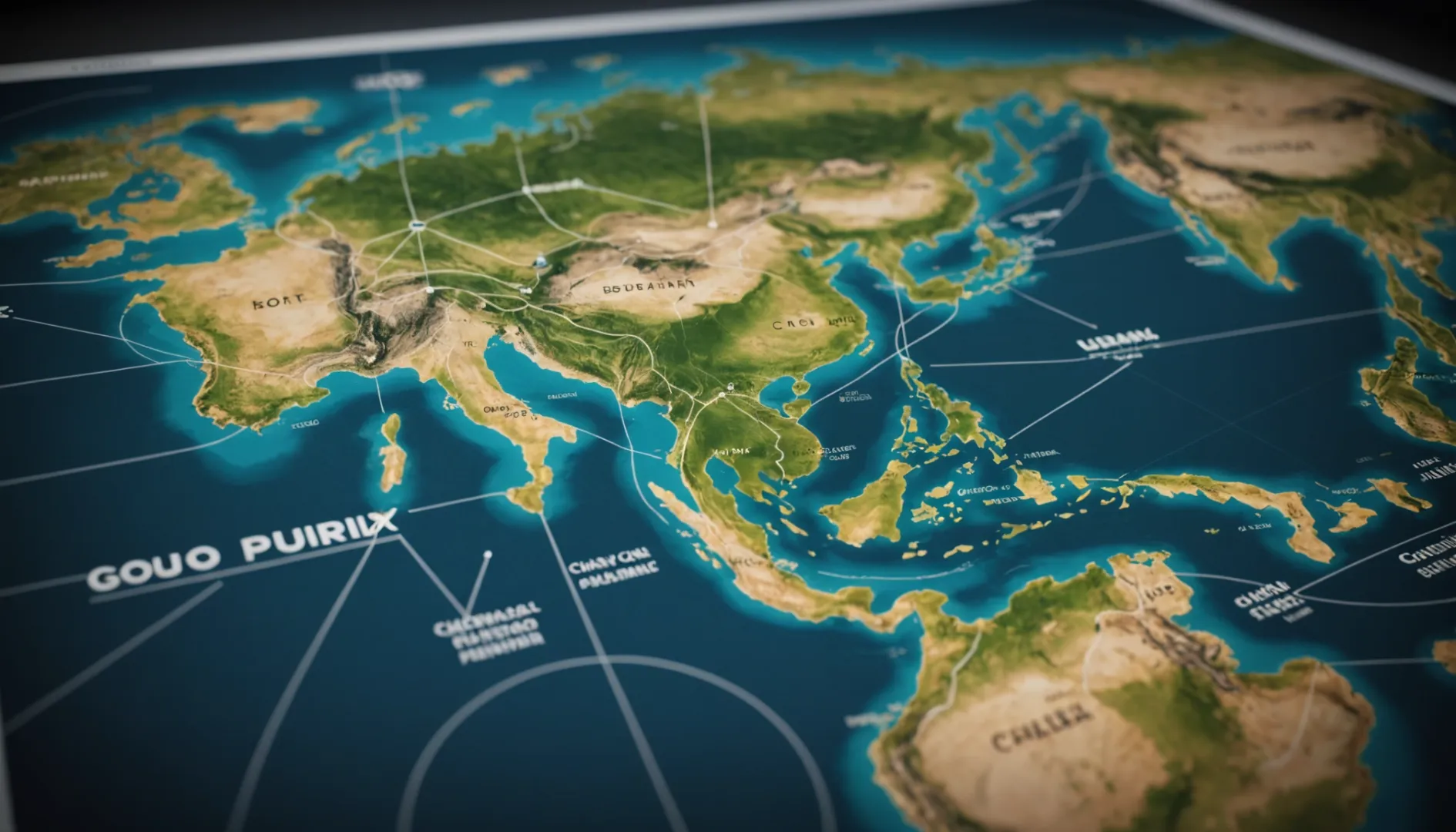
Диверсификация поставщиков
Я помню, как мне впервые пришлось пересмотреть свою стратегию управления цепочками поставок. Это был нервный момент. Что, если внезапное повышение тарифов выведет все из равновесия? Тогда я понял, как важно диверсифицировать поставщиков. Заказывая товары из разных стран, я могу уменьшить свою зависимость от одного государства. Например, если мой основной поставщик находится в Китае, я могу изучить варианты производства в Вьетнам или Таиланд2 Казалось бы, это разумный шаг, чтобы обезопасить себя от изменения тарифов или торговых споров.
Близкий и дальний подбор персонала
Концепция ближнего зарубежья нашла отклик во время одного из тех долгих вечеров, когда я заглядывал в таблицы логистики. Приближение производства к дому позволяет сократить логистические расходы и повысить эффективность. Оншоринг делает еще один шаг вперед, полностью перенося производство на родину. Например, американские компании могут рассмотреть возможность организации производства в Мексике или даже в самих США, что может значительно сократить время выполнения заказа и повысить эффективность. устойчивость цепочки поставок3.
Стратегические партнерства и альянсы
На моем пути создание стратегических партнерств стало решающим фактором. Сотрудничая с ключевыми поставщиками и заинтересованными сторонами, я обрел гибкость, позволяющую оперативно реагировать на изменения рынка. Эти альянсы не только предоставляли общие ресурсы и знания, но и открывали двери на новые рынки и технологии. Вдохновляет, когда видишь, как международное сотрудничество4 процветают в различных отраслях.
Использование технологий
Внедрение технологий в управление цепочками поставок - это как шаг в будущее. Такие инструменты, как аналитика на основе искусственного интеллекта и блокчейн, обеспечивают беспрецедентную видимость и точность прогнозирования. Эти инновации позволили мне предвидеть изменения и адаптировать свои стратегии в упреждающем режиме. Например, технология блокчейн5 обеспечивает прозрачное отслеживание товаров по всей цепочке поставок, позволяя в режиме реального времени получать информацию об уровне запасов и статусе отгрузок.
Корректировки в управлении запасами
Еще одной важнейшей стратегией стала корректировка методов управления запасами. Мне предстояло решить, поддерживать ли более высокие уровни запасов в качестве буфера на случай сбоев или внедрить систему "точно в срок", основанную на более точном прогнозировании спроса. Баланс между стоимостью хранения и уровнем обслуживания был ключом к постоянному удовлетворению спроса клиентов без чрезмерного накопления запасов.
Заключение
Хотя каждая стратегия имеет свои плюсы и минусы, компаниям важно оценить свою уникальную ситуацию и рыночные условия, чтобы определить наиболее подходящий подход. Конечная цель - создать устойчивую цепочку поставок, способную противостоять сбоям и продолжать эффективно поставлять продукцию клиентам.
Текущий тариф на китайские воздухоочистители составляет 0%.Правда
Очистители воздуха из Китая освобождены от тарифов до мая 2025 года.
Импорт воздухоочистителей из Индии дешевле, чем из Китая.Ложь
Китай имеет более надежную цепочку поставок, что снижает затраты.
Стоит ли вам рассматривать возможность импорта из других стран, кроме Китая?
Вы когда-нибудь задумывались о том, не пора ли расправить крылья и заняться импортом за пределы Китая?
В условиях, когда мир меняется, целесообразно изучить возможности импорта не только из Китая. Такие страны, как Вьетнам, Индия и Мексика, предлагают альтернативные варианты, которые могут помочь диверсифицировать цепочки поставок и снизить риски, хотя баланс между стоимостью и доступом к технологиям остается сложной задачей.
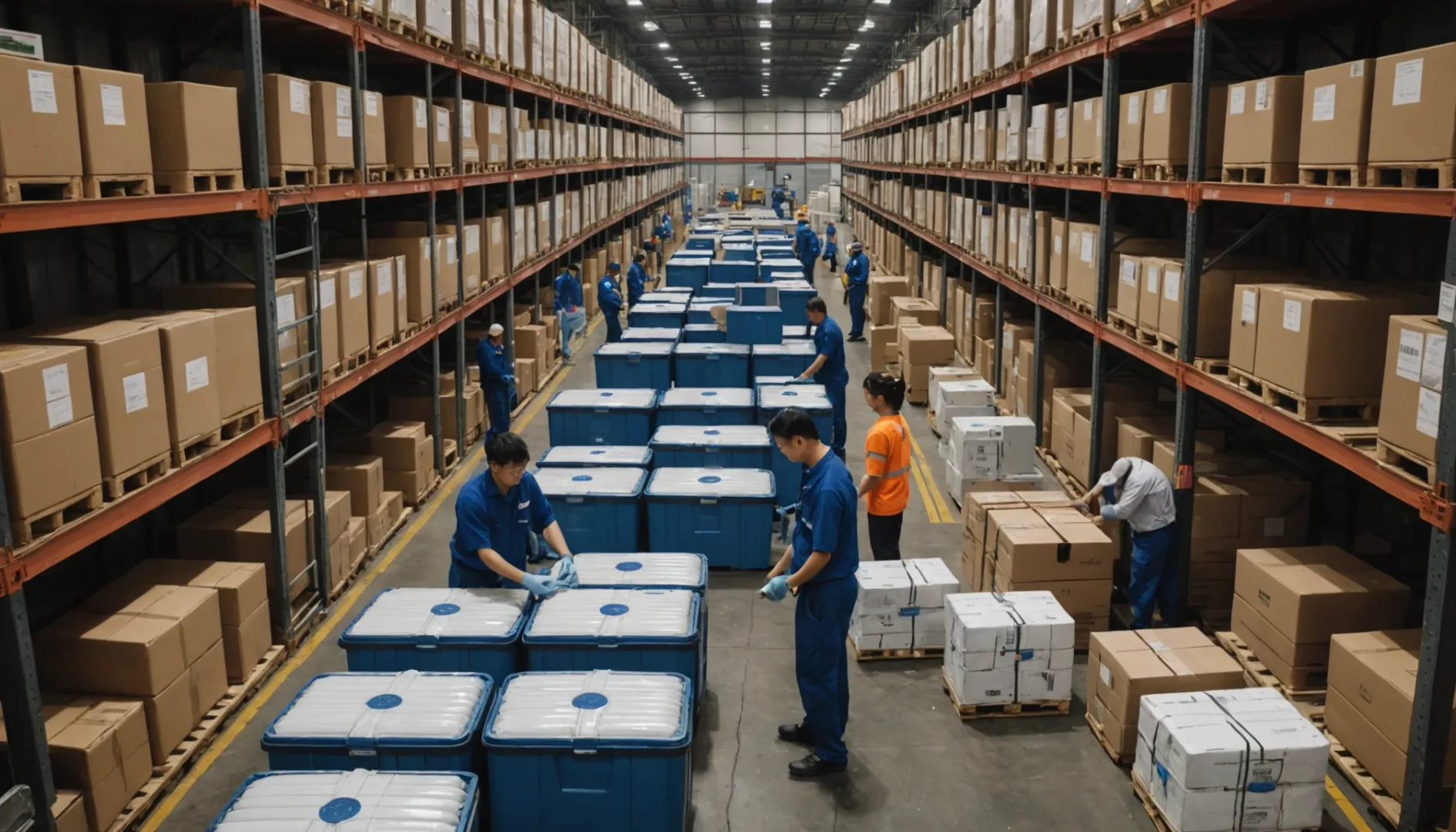
Оценка последствий тарифов
Представьте себе: вы сидите за рабочим столом, потягивая утренний кофе, и тут натыкаетесь на новость - тарифы на воздухоочистители из Китая могут резко вырасти после 2025 года. Сейчас все идет гладко: до мая 2025 года тарифы будут нулевыми, но кто знает, что ждет нас в будущем? Это все равно что планировать пикник и надеяться, что не пойдет дождь. Я понял, что быть в курсе этих изменений так же важно, как проверять погоду перед выходом на улицу. Изучение тарифа6 сценарии могут оказаться тем самым зонтиком, который нам нужен.
Диверсификация цепочек поставок
Я всегда верил в то, что нельзя складывать все яйца в одну корзину. Когда я слышал о том, что компании переносят производство в такие места, как Вьетнам или Таиланд, я думал: "Это разумный шаг!" Представьте себе . Apple открывает магазин7 во Вьетнаме - это как найти скрытую жемчужину в поисках сокровищ. Этот сдвиг обеспечивает защиту от потенциальных торговых войн, предлагая более адаптируемую цепочку поставок. Это как иметь запасной план, который действительно работает!
Баланс между стоимостью и технологией
Поход за импортом в такие страны, как Индия или Мексика, напоминает хождение по натянутому канату. С одной стороны, есть потенциал для экономии средств, с другой - риск упустить передовые технологии Китая. Это классическое балансирование. И давайте посмотрим правде в глаза: китайские инновации, особенно в области электроники, похожи на новейший смартфон, который все хотят заполучить в свои руки.
Дилемма местного производства
Идея локального производства в США звучит привлекательно - больше никаких проблем с импортом! Но когда я копнул глубже, то обнаружил, что это сопряжено с определенными трудностями, например, с более высокими затратами. Это все равно что выбирать между удобством и бюджетом при покупке продуктов. Понимание воздействие на местное производство8 может помочь мне решить, соответствует ли это моим бизнес-целям.
В условиях постоянно меняющегося глобального ландшафта взвешивание этих факторов помогает мне принимать взвешенные решения относительно стратегии развития цепочки поставок. Кто бы мог подумать, что импорт может быть таким увлекательным занятием?
Тариф на китайские воздухоочистители составляет 0% до мая 2025 года.Правда
В настоящее время воздухоочистители из Китая освобождены от американских тарифов до мая 2025 года.
Импорт воздухоочистителей из Вьетнама позволяет избежать будущих тарифов.Правда
Заказывая товары во Вьетнаме, можно обойти возможное повышение тарифов между США и Китаем.
Почему я должен покупать воздухоочистители в США?
Помните, как вам срочно понадобился очиститель воздуха? Покупка на месте может спасти положение.
Покупая воздухоочистители в США, я получаю такие преимущества, как поддержка местной экономики, немедленное получение продукции и великолепное обслуживание клиентов. Кроме того, я избегаю непредсказуемости международного импорта, обеспечивая стабильные цены и передовые технологии без лишнего ожидания.

Поддержка местных предприятий
Я помню, как заходил в свой соседний магазин, и чувство поддержки местного бизнеса ни с чем не сравнимо. Каждая покупка помогает осуществить чью-то мечту и поддерживает жизнь нашего сообщества. Это как быть частью большой семьи, где все заботятся друг о друге. Кроме того, некоторые местные магазины предлагают уникальные и даже настраиваемые параметры9 что крупные сети не делают.
Немедленная доступность
Однажды, во время сезона лесных пожаров, качество воздуха резко ухудшилось за одну ночь. К счастью, я знал, что могу рассчитывать на то, что в местном магазине есть воздухоочистители в наличии. Не нужно было ждать доставки или разбираться с задержками - я сразу же взяла все необходимое и почувствовала себя готовой ко всему.
Лучшая поддержка клиентов
Ничто не сравнится с общением со знающими сотрудниками магазина, которые действительно разбираются в продукции, которую продают. Когда мне понадобился совет, какая модель лучше всего подойдет для моего дома, они сразу же пришли на помощь с советами и рекомендациями. Мне приятно осознавать, что я могу заглянуть к ним с любым вопросом о замена фильтров10 или техническое обслуживание.
Стабильность на фоне неопределенности в торговле
В условиях надвигающейся торговой напряженности покупка местных товаров обеспечивает душевное спокойствие. Вам не придется беспокоиться о внезапном повышении цен из-за тарифов. Поддерживать компании из США - значит наслаждаться стабильными ценами и избегать международной непредсказуемости.
Доступ к передовым технологиям
Очень интересно наблюдать за тем, как американские производители повышают свой уровень в области технологий очистки воздуха. Покупая отечественную продукцию, я не просто получаю отличный продукт; я поддерживаю инновационные решения, которые способствуют устойчивому развитию и передовым системам фильтрации.
Создание устойчивых практик
Выбор в пользу местных покупок также соответствует моим ценностям, связанным с сокращением углеродного следа. Меньше транспорта - меньше выбросов. Кроме того, когда местные производители сосредоточены на устойчивые практики11И мне приятно осознавать, что мой выбор помогает окружающей среде. Речь идет об осознанном принятии решений, которые соответствуют тому, что для меня важнее всего.
Тарифы на очистители воздуха, поставляемые из Китая в США, в настоящее время равны нулю.Правда
До 30 мая 2025 года импорт воздухоочистителей из Китая не облагается тарифами.
Воздухоочистители американского производства дешевле импортных.Ложь
Местное производство часто обходится дороже импортного из-за тарифов.
Заключение
Импорт воздухоочистителей из Китая в США свободен от тарифов до 30 мая 2025 года. В будущем тарифы могут значительно вырасти, что заставит импортеров рассмотреть альтернативные стратегии поиска поставщиков.
-
Узнайте, как компании адаптируются, чтобы избежать роста тарифов. ↩
-
Узнайте, почему Вьетнам или Таиланд являются стратегически важными для диверсификации цепочек поставок. ↩
-
Узнайте, как ближнее зарубежье может повысить устойчивость цепочки поставок. ↩
-
Изучите успешные международные сотрудничества, которые способствовали росту бизнеса. ↩
-
Поймите, как технология blockchain повышает прозрачность цепочек поставок. ↩
-
Будьте в курсе изменений тарифов, влияющих на стоимость импорта из Китая. ↩
-
Поймите, почему крупные компании меняют местоположение производства. ↩
-
Изучите преимущества и недостатки местных поставщиков. ↩
-
Изучите варианты, которые могут предложить местные магазины. ↩
-
Получите рекомендации по эффективному обслуживанию очистителя воздуха. ↩
-
Узнайте об экологически чистых производственных процессах. ↩



